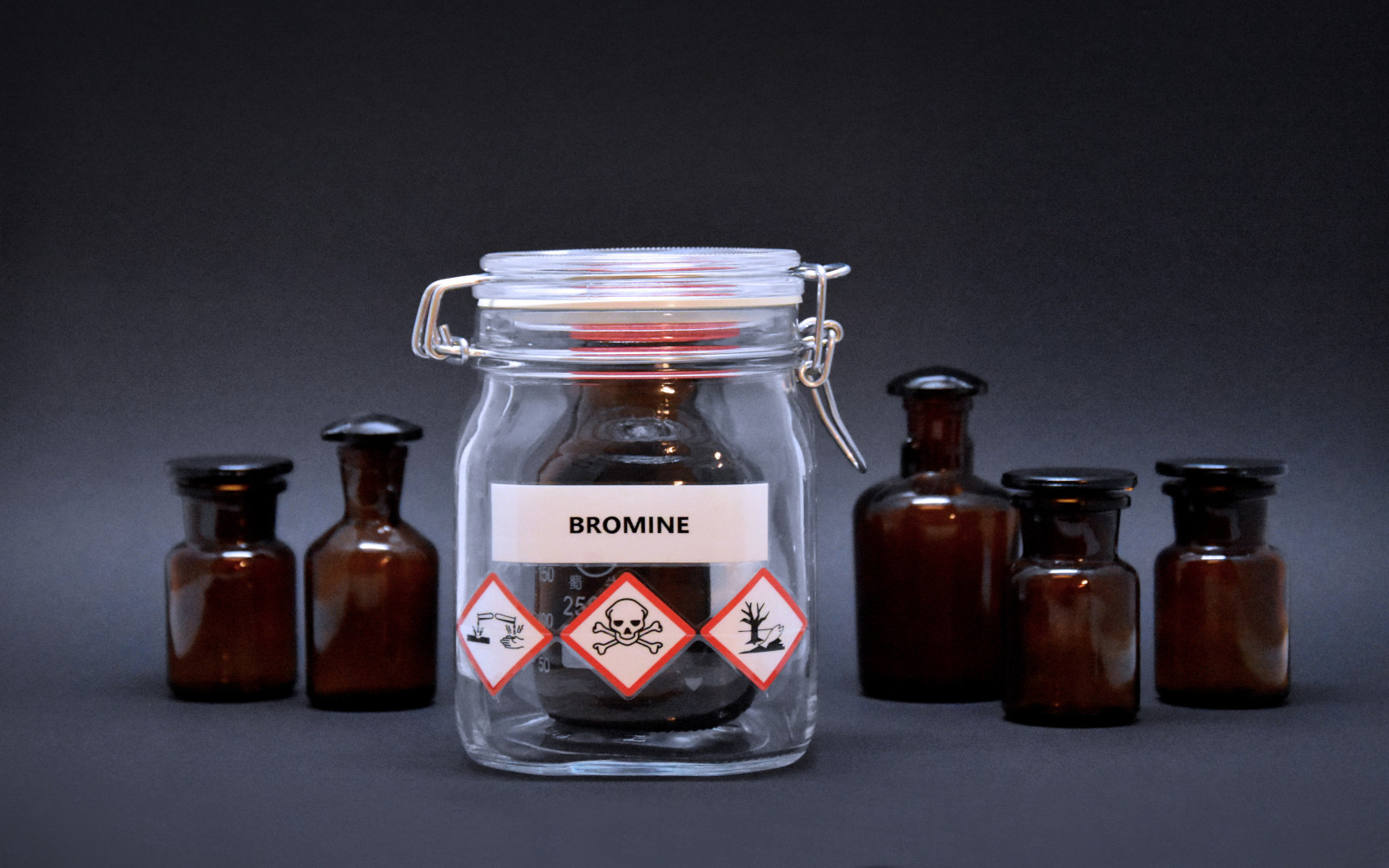Bromine (Br2) is a reddish-brown liquid at room temperature, emitting a strong, unpleasant odor. It is a highly reactive and volatile element, used in various industrial applications, including flame retardants, water treatment, and pharmaceuticals.
Despite its utility, bromine poses significant health hazards, particularly in occupational settings. This article explores the health effects of bromine exposure, industries where it is commonly used, and essential safety measures for workers and safety managers.
Health Effects of Bromine Exposure
Bromine is a potent irritant and can cause severe health issues upon exposure. The severity of the effects depends on the concentration, duration of exposure, and the route through which it enters the body (inhalation, skin contact, or ingestion).
Acute Exposure
- Respiratory Irritation: Inhalation of BR2 vapors can lead to severe irritation of the respiratory tract, causing coughing, shortness of breath, and chest pain. High levels of exposure can result in bronchospasm and pulmonary edema, a potentially life-threatening condition.
- Eye and Skin Burns: Contact with liquid bromine or its vapors can cause severe burns, redness, and blistering of the skin. Eye exposure can lead to pain, redness, and, in severe cases, permanent damage to the cornea.
- Gastrointestinal Effects: Ingesting BR2 can cause nausea, vomiting, abdominal pain, and damage to the gastrointestinal tract.
Chronic Exposure
- Respiratory Conditions: Prolonged exposure to low levels of BR2 may lead to chronic respiratory conditions, including bronchitis and asthma-like symptoms.
- Neurological Effects: Chronic exposure to BR2 compounds can affect the central nervous system, leading to symptoms such as headache, dizziness, and in severe cases, neurological impairments.
Industries and Applications
Bromine is utilized across various industries, owing to its chemical properties. Key applications include:
- Flame Retardants: BR2 compounds are widely used as flame retardants in textiles, electronics, and construction materials due to their effectiveness in slowing down the spread of fire.
- Water Treatment: BR2 is employed as a disinfectant in water treatment processes, particularly in swimming pools and hot tubs, as an alternative to chlorine.
- Pharmaceuticals and Chemicals: It serves as an intermediate in the synthesis of various pharmaceuticals, agrochemicals, and dyes.
Safety Considerations and Best Practices
Given the hazardous nature of bromine, strict safety measures must be implemented to prevent exposure and protect workers. Safety managers and industrial hygienists should prioritize the following practices:
Monitoring and Detection
- Gas Detection Systems: The use of bromine gas detectors, such as the Accusafe or GasD 8000 by Interscan, is crucial for monitoring ambient air levels. These detectors should be strategically placed in areas with potential bromine leaks and regularly maintained for accuracy.
- Ventilation: Adequate ventilation systems, including local exhaust ventilation, are essential to control bromine vapors and maintain safe air quality.
Personal Protective Equipment (PPE)
- Respiratory Protection: Appropriate respiratory protection, such as full-face respirators with acid gas cartridges, should be worn in areas where bromine exposure is possible.
- Eye and Skin Protection: Workers should wear chemical-resistant gloves, protective clothing, and safety goggles or face shields to prevent skin and eye contact.
Emergency Response and Training
- Emergency Procedures: Emergency protocols should be established and include measures for spill containment, evacuation, and first aid. Safety showers and eyewash stations should be readily available in areas where BR2 is handled.
- Training and Education: Regular training sessions should be conducted to educate workers about the hazards of bromine, proper PPE usage, and emergency response actions.
Lesser-Known Insights and Considerations
- Corrosive Nature: Bromine is highly corrosive and can cause damage to materials and equipment. Special care should be taken to store BR2 in corrosion-resistant containers and ensure proper maintenance of equipment used in its handling.
- Environmental Impact: Bromine can contribute to environmental pollution, particularly in water bodies, where it can affect aquatic life. Measures should be taken to minimize releases and ensure proper waste management.
Bromine is a versatile chemical with wide-ranging applications, but its potential health hazards necessitate careful handling and rigorous safety protocols.
Understanding the health effects of BR2 exposure, implementing effective monitoring and detection systems, and adhering to safety measures are essential for safeguarding workers in industrial environments.
For more information on bromine gas detection systems and to request a quote for the Accusafe or GasD 8000 by Interscan, contact us today. Prioritize safety with reliable gas detection solutions tailored to your industry needs.


